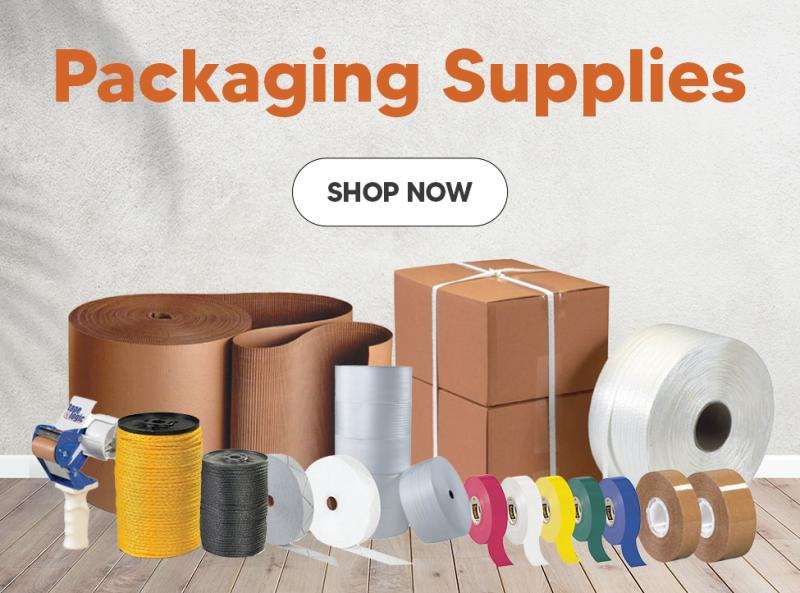Standard Shipping Box Sizes: A Guide

The size of a box plays an important part in the dynamics of effortless product packaging and shipping. Selecting standard-sized boxes makes it easier for carriers to handle packages, contributing to more efficient shipping. Using a box with the correct measurements, i.e., length, width, and height, for a product helps to save on shipping costs. Choosing the right box dimensions will protect the contents and keep them safe and intact to ensure reliable deliveries for customers and clients.
Let us take a look at the common sizes of shipping boxes.
Standard Size Small Boxes
Small boxes with standard measurements are perfect for packing small and compact products, ensuring snug fits. Less room for movement means fewer chances of breakage and damage. These sizes include:
4 x 4 x 4": These are perfect for packing single items like small electronic devices or jewelry.
6 x 6 x 6": They can accommodate multiple small items.
8 x 8 x 8": Ideal as small tools or toy packages.
Medium Size Standard Boxes
They are more versatile than small boxes due to their size and the extra space allows padding and cushioning, without cramping the product. Standard dimensions in this category are:
12 x 12 x 6": Good for fitting shallow or flat items like small kitchen appliances or picture frames.
12 x 12 x 12": Books, clothes, and a set of small products can be easily packed in these boxes.
16 x 12 x 8": Convenient for shipping medium-sized electronic gadgets or hardcover books.
Large Size Standard Boxes
These boxes provide enough space for packaging bulkier items. Common measurements include:
18 x 18 x 16": They are for large decorative items or appliances.
24 x 18 x 12": These can easily fit larger tools, artwork, and other flat items.
20 x 20 x 20": Convenient for packing large-sized toys and bulky items.
Flat Standard Size Boxes
They change the game for packing, shipping, or storing flat or slim items. The shape is ideal for protecting the package contents from pressure or getting bent, ensuring they reach the final destination in the perfect condition. Typical sizes are:
12 x 9 x 1": You can keep small books, photos, framed art pieces, or documents in them.
15 x 10 x 3": Useful for packing large prints or documents.
17 x 12 x 2": Helpful for transporting photo albums and certificates, etc.
Multi-Depth Boxes
In addition to the standard-sized cartons, some multi-depth box sizes are used frequently for products that do not conform to common measurements. They are adjustable and offer flexibility to fit the item perfectly, optimizing protection and maximizing cost-effective shipping. These include sizes like 5 x 6”
Of all the above-explained box types, though the most commonly used standard dimensions are the 8” x 8” x 8” and 9” x 9” x 9” boxes, they are all suitable for shipping a variety of items. The correct box for your product would be the one that can safely transport products from one place to another.
An important factor to note is that corrugated shipping boxes have two dimension sets: interior and exterior. The interior box measurements are the industry standards used to determine the fit of the item placed inside. Therefore, when ordering boxes, the sizes you see relate to the interior measurement, unless stated otherwise by the packaging provider. However, knowing about the box’s exterior dimensions is helpful for shipping and inventory purposes.
How to choose the correct standard shipping box size for your product?
Consider the product: Measure the exact size and weight to ensure the shipping box can accommodate both perfectly.
Take accurate measurements: Measure the product’s height, width, and length to cross-check if it fits the box and to see if there is enough space to put padding materials. It is a good idea to increase each dimension of the product by one or two inches to make room for the cushioning material and create a snug fit.
Understand storage and shipping costs: The size of the shipping box can have a direct and proportional impact on delivery charges, for instance, the larger the boxes, the greater the dimensional weight charges and shipping costs. Therefore, choose the smallest box that can fit the product and padding nicely to minimize shipping costs without compromising on the protection factor. Larger boxes are also harder to stack.
In some cases, standard-size boxes are unsuitable for packing items, specifically if they are odd or irregular-shaped. This is where custom-sized boxes fill the gap to ensure reliable deliveries. They guarantee optimal protection during transportation. Choose a corrugated shipping box supplier who can customize or personalize your box, apart from providing standard sizes.


